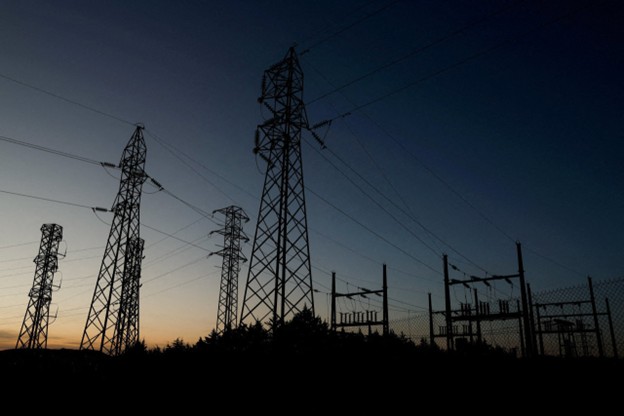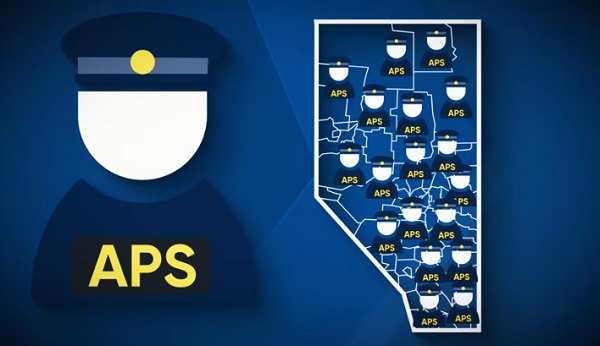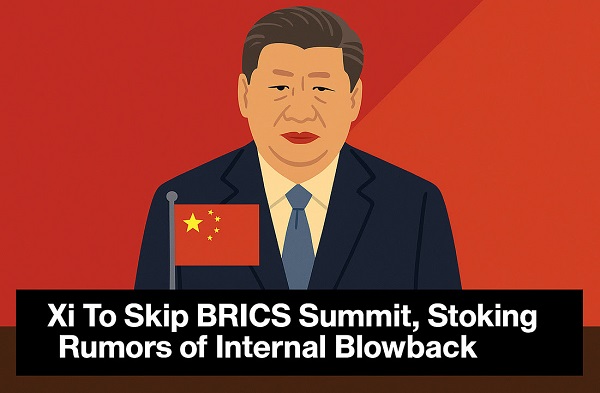Automotive
World’s first all-electric bus fleet shut down due to breakdowns and expense

From Heartland Daily News
Electric Buses Not a Panacea
Last week, the city of Seneca, South Carolina decided to shut down the Clemson Area Transit System, which served Seneca and nearby Clemson University. Once touted as owning the world’s first all-electric bus fleet, just a few years later two thirds of its expensive electric buses had broken down, the company that made them went bankrupt, parts were no longer available, and the city can’t afford to buy replacement buses.
Seneca is not exactly a major metropolis. But Clemson Area Transit isn’t the only transit agency to have trouble with electric buses. Just the day before Seneca decided to shut down its transit system, Austin’s Capital Metro announced that it was giving up on its plan to electrify its bus fleet by 2030. Electric bus technology, said the agency, simply hasn’t progressed far enough to replace Diesels.
California’s Foothill Transit, one of the first agencies to use rapid-charge electric buses in 2010, has also had problems. Like Austin, the agency had hoped to completely electrify by 2030. Instead, by 2020 most of the electric buses in its fleet were out of service. In 2021, the agency decided to return the buses even though doing so would require it to pay a $5 million penalty to the Federal Transit Administration, whose grant initially paid most of the cost.
The Southeast Pennsylvania Transportation Authority (SEPTA) may be the largest agency to have practically given up on electric buses. It pulled its 25-bus electric fleet out of service in 2021 when the buses were just five years old. The buses had suffered cracks in their chassis, but it appears that problem was only the straw that broke the omnibus’s back. “We do not feel the current [electric bus] technology is a good investment at this time,” concluded SEPTA’s general manager.
Transit agencies in Asheville, Colorado Springs, and several other cities have reported similar problems. Albuquerque completely gave up on its electric buses and returned them to the manufacturer, a Chinese company called BYD.
Electric buses cost 50 to 100 percent more than their Diesel counterparts. A 2019 study by US PIRG predicted that such buses would nevertheless save transit agencies $400,000 apiece over their lifetimes due to lower fuel and maintenance costs. US PIRG relied on four “success stories” to justify this conclusion. Success story number one was Seneca, South Carolina.
The report acknowledged Albuquerque’s problems but blamed them on the city’s hills and high temperatures. Compared with Austin, Albuquerque is practically flat and its temperatures are nowhere near as extreme. If electric buses can’t work in Albuquerque, they aren’t going to work in a lot of other cities.
Other than Albuquerque, one thing many of these failures have in common is electric buses manufactured by Proterra, one of four major electric bus manufacturers that have recently sold buses in the U.S. and the only one to actually be a U.S. company. In 2023, it claimed that COVID-related supply-chain problems had driven it into bankruptcy. The company’s three divisions — transit buses, batteries and drive trains, and charging systems — were sold to three other companies to pay Proterra’s debts and none of the buyers are supporting Proterra’s buses or even making similar buses. In view of the many problems transit agencies were having with its buses before 2023, it seems likely the supply-chain explanation was just a dodge for Proterra’s shoddy design and workmanship.
One reason for that may simply be opportunism on the part of bus manufacturers, including both Proterra and BYD. Before passage of the 2021 infrastructure bill, the federal government was paying 80 percent of the cost of Diesel buses but 90 percent of the cost of electric buses purchased by transit agencies. For a transit agency, that meant that an electric bus could cost twice as much as a Diesel bus without costing local taxpayers an extra dime. Bus manufacturers thus felt free to increase their profits by raising the price of their electric buses and, having done so, may have compounded the problem by cutting costs.
Beyond manufacturing defects, electric buses have several generic problems. First, while a Diesel bus can operate all day, an electric bus can operate only a few hours on a single time-consuming charge. Proterra claimed to have solved this problem with a rapid-charge system, but that didn’t prevent Foothill Transit from suffering enormous problems with its electric buses. This probably is particularly serious on long bus routes: Austin’s Capital Metro estimates that today’s electric buses could satisfactorily serve only 36 percent of its routes.
Second, the batteries needed to power electric bus motors are heavy, which is probably why SEPTA’s buses suffered cracks in their chassis. Supposedly, the frames on SEPTA’s Proterra buses were made of “resin, fiberglass, carbon fiber, balsa wood, and steel reinforcement plates,” which almost sounds like a joke. But making frames strong enough to support the batteries means adding even more weight to the buses, which shortens their range and adds to wear and tear on other parts of the buses.
Third, electric buses are not necessarily climate-friendly enough to justify their added cost. In Washington state, where most electric power comes from hydroelectric dams, switching from Diesel to electric buses will definitely reduce greenhouse gas emissions. But most other states, including New Mexico, South Carolina, and Texas, get most of their electricity from fossil fuels and thus electric buses may not reduce greenhouse gas emissions at all when compared with Diesels.
Under the 2021 infrastructure law, the federal government is handing out close to a billion dollars to buy electric buses. Advocacy groups such as US PIRG want transit agencies to “commit to a full transition to electric buses on a specific timeline.” Such funding and commitment may be premature, however, if electric bus technology is not capable of equalling Diesel buses, will cost agencies more in the long run, and won’t do much to reduce greenhouse gas emissions.
The Antiplanner is a forester and economist with more than fifty years of experience critiquing government land-use and transportation plans.
Originally published by The Antiplanner. Republished with permission.
Automotive
Power Struggle: Electric vehicles and reality
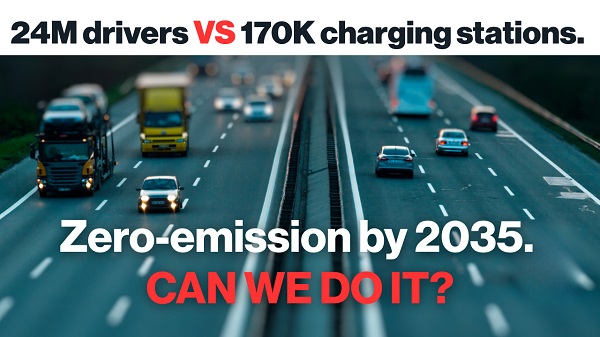
From Resource Works
Tension grows between ambition and market truths
Host Stewart Muir talks on Power Struggle with Brian Maas, president of the California New Car Dealers Association, and Maas introduces us to a U.S. problem that Canada and B.C. also face right now. “The problem is there are mandates that apply in California and 11 other states that require, for the 2026 model year, 35% of all vehicles manufactured for sale in our state must be zero-emission, even though the market share right now is 20%. “So we’ve got a mandate that virtually none of the manufacturers our dealers represent are going to be able to meet.”
Maas adds: “We’re trying to communicate with policymakers that nobody’s opposed to the eventual goal of electrification. California’s obviously led that effort, but a mandate that nobody can comply with and one that California voters are opposed to deserves to be recalibrated.” Meanwhile, in Canada, the same objections apply to the federal government’s requirement, set in 2023, that 100% of new light-duty vehicles sold must be zero-emission vehicles, ZEVs (electric or plug-in hybrid) by 2035, with interim targets of 20 per cent by 2026 and 60 per cent by 2030. There are hefty penalties for dealers missing the targets.
Market researchers note that it now takes 55 days to sell an electric vehicle in Canada, up from 22 days in the first quarter of 2023. The researchers cite a lack of desirable models and high consumer prices despite government subsidies to buyers in six provinces that run as high as $7,000 in Quebec.
In the U.S. The Wall Street Journal reports that, on average, electric vehicles and plug-in hybrids sit in dealer lots longer than gasoline-powered cars and hybrids, despite government pressure to switch to electric. (The Biden administration ruled that two-thirds of new vehicles sold must be electric by 2032.) For Canada, the small-c conservative Fraser Institute reports: “The targets were wild to begin with. As Manhattan Institute senior fellow Mark P. Mills observed, bans on conventional vehicles and mandated switches to electric means, consumers will need to adopt EVs at a scale and velocity 10 times greater and faster than the introduction of any new model of car in history.”
When Ottawa scrapped federal consumer subsidies earlier this year, EV manufacturers and dealers in Canada called on the feds to scrap the sales mandates. “The federal government’s mandated ZEV sales targets are increasingly unrealistic and must end,” said Brian Kingston, CEO of the Canadian Vehicle Manufacturers’ Association. “Mandating Canadians to buy ZEVs without providing them the supports needed to switch to electric is a made-in-Canada policy failure.” And Tim Reuss, CEO of the Canadian Automobile Dealers Association, said: “The Liberal federal government has backed away from supporting the transition to electric vehicles and now we are left with a completely unrealistic plan at the federal level. “There is hypocrisy in imposing ambitious ZEV mandates and penalties on consumers when the government is showing a clear lack of motivation and support for their own policy goals.”
In B.C., sales growth of ZEVs has recently slowed, and the provincial government is considering easing its ZEV targets. “The Energy Ministry acknowledged that it will be ‘challenging’ to reach the target that 90 per cent of new vehicles be zero emission by 2030.” Nat Gosman, an assistant deputy minister in the B.C. energy ministry, cited reasons for the slowdown that include affordability concerns due to a pause in government rebates, supply chain disruptions caused by U.S. tariffs, and concerns about reliability of public charging sites.
Barry Penner, chair of the Energy Futures Institute and a former B.C. Liberal environment minister, said the problem is that the government has “put the cart before the horse” when it comes to incentivizing people to buy electric vehicles. “The government imposed these electric vehicle mandates before the public charging infrastructure is in place and before we’ve figured out how we’re going to make it easy for people to charge their vehicles in multi-family dwellings like apartment buildings.”
Penner went on to write an article for Resource Works that said: “Instead of accelerating into economically harmful mandates, both provincial and federal governments should recalibrate. We need to slow down, invest in required charging infrastructure, and support market-based innovation, not forced adoption through penalties. “A sustainable energy future for BC and Canada requires smart, pragmatic policy, not economic coercion. Let’s take our foot off the gas and realign our policies with reality, protect jobs, consumer affordability, and real environmental progress. Then we can have a successful transition to electric vehicles.”
Back to Power Struggle, and Brian Maas tells Stewart: “I think everybody understands that it’s great technology and I think a lot of Californians would like to have one. . . . The number one reason consumers cited for not making the transition to a zero-emission vehicle is the lack of public charging infrastructure. We’re woefully behind what would be required to move to 100% environment. “And if you live in a multifamily dwelling, an apartment building or something like that, you can’t charge at home, so you would have to rely on a public charger. Where do you go to get that charged?
“The state’s Energy Commission has said we need a million public chargers by 2030 and two million public chargers by 2035. We only have 178,000 now and we’re adding less than 50,000 public chargers a year. We’re just not going to get there fast enough to meet the mandate that’s on the books now.”
In Canada, Resource Works finds there now are more than 33,700 public charging ports, at 12,955 locations. But Ottawa says that to support its EV mandate, Canada will need about 679,000 public ports. “This will require the installation of, on average, 40,000 public ports each year between 2025 and 2040.”
And we remind readers of Penner’s serious call on governments to lighten the push on the accelerator when it comes to ZEV mandates: “Let’s take our foot off the gas and realign our policies with reality, protect jobs, consumer affordability, and real environmental progress. Then we can have a successful transition to electric vehicles.”
- Power Struggle YouTube video: https://ow.ly/8J4T50WhK5i
- Audio and full transcript: https://ow.ly/Np8550WhK5j
- Stewart Muir on LinkedIn: https://ow.ly/Smiq50UWpSB
- Brian Maas on LinkedIn: https://ow.ly/GuTh50WhK8h
- Power Struggle on LinkedIn: https://ow.ly/KX4r50UWpUa
- Power Struggle on Instagram: https://ow.ly/3VIM50UWpUg
- Power Struggle on Facebook: https://ow.ly/4znx50UWpUs
- Power Struggle on X: https://ow.ly/tU3R50UWpVu
Automotive
Electric vehicle sales are falling hard in BC, and it is time to recognize reality.
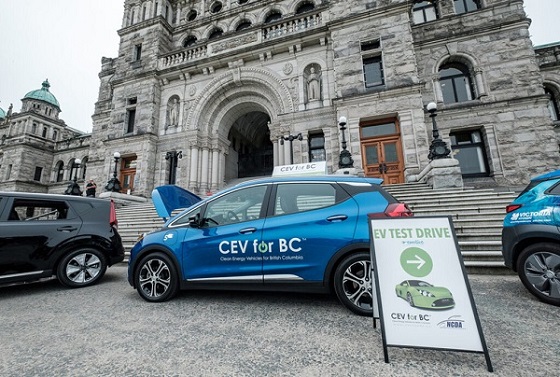
From Energy Now
By Barry Penner
Get the Latest Canadian Focused Energy News Delivered to You! It’s FREE: Quick Sign-Up Here
British Columbia’s electric vehicle (EV) sales mandates were created with good intentions, but the collision with reality is now obvious.
Although we are still in 2025, the 26 percent zero-emission vehicle sales mandate is already hitting our dealerships. That’s because it applies to the 2026 model year, and many of those models are starting to arrive across the province now.
While 26 percent sounds moderate compared to 90 percent by 2030, or 100 percent by 2035, as also required by BC law, the facts on the ground are grim.
According to S&P Global Mobility data, EV sales in BC have plummeted to around 15.4 percent as of June 2025, down from nearly 25 percent in mid-2024. This decline happened fast after both federal, up to $5,000, and provincial governments, up to $4,000 in BC, stopped funding their EV rebate programs earlier this year. So, the very incentives that made expensive electric vehicles accessible to middle-income buyers disappeared just when they were needed most.
Government polling shows 60 percent of British Columbians say cost is their biggest barrier to buying electric vehicles. And yet, both levels of government pulled the financial support while maintaining the sales mandates, with penalties of up to $20,000 per non-compliant vehicle. This is not just bad policy, it’s economic punishment for our auto sector.
Flavio Volpe, president of the Automotive Parts Manufacturers’ Association, pointed out the severe consequences for automakers. Federally, failing to meet the EV sales targets could mean astronomical penalties. A company selling 300,000 vehicles a year that misses its target by 10 percent could face a $600 million fine. These are not theoretical risks; they are real and could mean manufacturers reduce their Canadian presence, potentially costing thousands of auto jobs.
And powering an all-electric vehicle fleet is no small task. The organization of which I am chair, the Energy Futures Institute, modelled BC’s electricity needs under the 2035 mandate scenario and found full implementation would require an extra two Site C dams’ worth of electricity. We’ve already been importing 20 to 25 percent of our electricity annually for the past few years, often from fossil fuels, which contradicts our clean energy goals.
Electric vehicles represent an important technological advance, but the path matters. With governments forcing unattainable mandates, they are creating resentment amongst potential buyers and a political backlash against EVs themselves.
Energy Futures recently learned that the BC government is undertaking a technical review of the Zero-Emission Vehicle Act, quietly acknowledging that sales targets are increasingly seen as next to impossible. Under consideration is a change to the targets themselves, along with adjustments to compliance ratios and eligibility rules for plug-in hybrids.
The market shift to regular hybrids, which you don’t plug in, is not supported by rebates, but is happening nevertheless. However, these vehicles, such as the Toyota Prius, are not considered “clean” enough under BC legislation and could attract a penalty of $20,000 each.
This only makes things worse for consumers who are already stretched. Punitive mandates create market distortions, restrict consumer choice, and drive up vehicle prices for everyone, especially lower-income families who rely on affordable used cars.
Instead of accelerating into economically harmful mandates, both provincial and federal governments should recalibrate. Ottawa’s Environment Minister Julie Dabrusin’s statement earlier this month to renew consumer rebates is a good start, if the government is determined to interfere with the marketplace. But rebates alone won’t be enough. We need to slow down, invest in required charging infrastructure, and support market-based innovation, not forced adoption through penalties.
A sustainable energy future for BC and Canada requires smart, pragmatic policy, not economic coercion. Let’s take our foot off the gas and realign our policies with reality, protect jobs, consumer affordability, and real environmental progress. Then we can have a successful transition to electric vehicles.
Barry Penner is chair of the Energy Futures Institute, former president of the Pacific Northwest Economic Region and former four-term B.C. MLA and cabinet minister.
-

 Brownstone Institute2 days ago
Brownstone Institute2 days agoFDA Exposed: Hundreds of Drugs Approved without Proof They Work
-
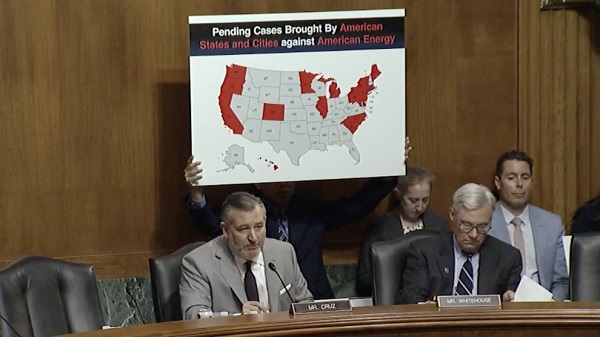
 Energy1 day ago
Energy1 day agoChina undermining American energy independence, report says
-
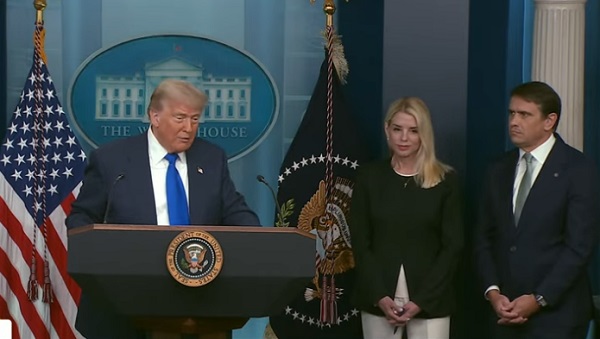
 Business1 day ago
Business1 day agoTrump on Canada tariff deadline: ‘We can do whatever we want’
-

 Automotive1 day ago
Automotive1 day agoElectric vehicle sales are falling hard in BC, and it is time to recognize reality.
-

 Business1 day ago
Business1 day agoEurope backs off greenwashing rules — Canada should take note
-

 Automotive1 day ago
Automotive1 day agoPower Struggle: Electric vehicles and reality
-
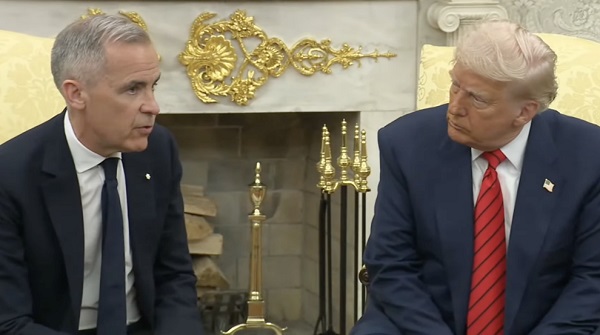
 Business10 hours ago
Business10 hours agoCanada Caves: Carney ditches digital services tax after criticism from Trump
-

 Crime10 hours ago
Crime10 hours agoSuspected ambush leaves two firefighters dead in Idaho
